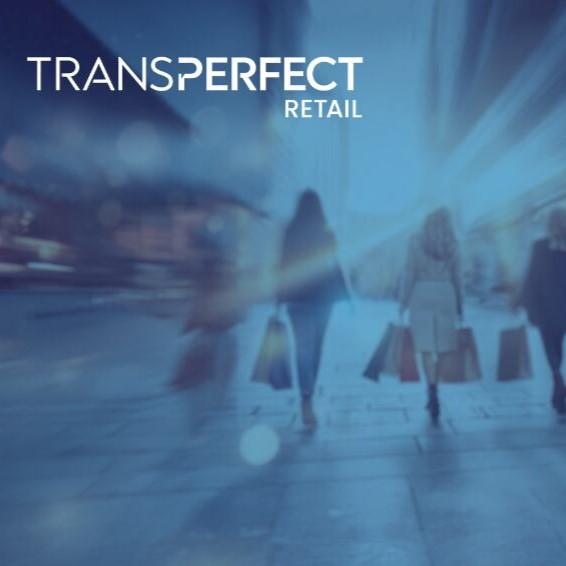Finding Success in Retail in 2020


As the pandemic and economic uncertainty continues, retailers are searching for both guidance and some good news as they venture into the second half of 2020. While going direct-to-consumer has always been challenging, there are success stories of businesses who are doing so today on a global scale—and with fewer resources available than ever before.
Translations.com brought together a panel of retail experts to provide some analysis on the current retail environment, discuss what is working for retail businesses as they adjust to the unique challenges this year has presented, and to answer attendees’ questions about the best path moving forward.
Meet the Experts
Harvey Bierman - Former VP Technology & Operations at Crocs
Errol Denger - Director of Strategy & Product at Adobe
Johan Boström - Co-Founder of inRiver
Charles Desjardins - EVP & Partner at Absolunet
Laura Madden - VP, Retail at Translations.com
A Lot Has Changed—But What Remains the Same?
The first topic our panel moderated, by Harvey, addressed was which trends and best-practices have remained constant despite all of the change we’ve seen this year. “Before the pandemic, there were probably five or six areas of focus for the year ahead,” said Harvey. “It’s likely one or two of those still exist.”
“The challenges we had before the pandemic remain the same,” said Johan. “High employee turnover, especially in the United States, is costing retailers nearly $20 billion a year. Staff are not sticking around long enough to really learn about the products they’re selling. Also, strong brand loyalty continues to diminish.”
“Another challenge that has not changed is retailers are struggling to provide a better, more personalized in-store experience,” Johan continued. “We’re better at providing great digital experiences. The question is, how do we succeed at both?”
“Before the pandemic, the merchants that had adopted a strong omni-channel strategy were winning in their market” said Charles. “That hasn’t changed, and in fact, it’s accelerated. Those who invested in this pre-pandemic and saw their stores close were able to transform those spaces into small warehouses and shipping centers, making them way more agile than other competitors.”
“Omni-channel is clearly something that has not changed and is more important than ever,” added Harvey.
“My perspective comes from being with Translations.com back in 2008 and 2009,” said Laura. “The difference between now and then is everything is digital today. This year, everyone was paralyzed in March and April, but those who were already pursuing a digital transformation pre-pandemic saw how important that strategy would be going forward and put more resources into hitting their timeframes.”
“Another thing that hasn’t changed is the importance of brand.” Laura continued. “What I’ve seen as both a service provider to the industry as well as a consumer is a kind of moral obligation to support the brands I like, brands that treat their employees well, and brands that catered to their customers’ needs. I’ve made a conscious effort to shop with brands that I wanted to help get through this period, especially if they were customizing their content or messaging in response to this crazy situation.”
“I think we are seeing many of the same trends continue, starting with customer centricity,” said Errol. “Listening to your customers, understanding the moments of truth throughout their brand interaction, and providing a frictionless commerce experience across all channels are as important as ever.”
Retail Success—Adapting to Customers’ Needs
Errol also offered the following retail success story:
“One of our largest customers in the HVAC space moved from in-store buying to curbside pickup. They really needed to understand what drove value for their customers— being fast, effective, and convenient. When they updated their strategy, they used geofencing so they knew exactly where their customers were as they approached and the associate could meet them at the door as they drove up and bring them their order.”
“As a result, they’ve actually decided to close all their branches, which used to be showrooms, and turn them into service centers. Change is constant in retail, so you’ll need to rapidly innovate, as opposed to broad, large-scale change, by taking small risks, testing them out, determining how customer base receives them, then amplifying them to expand into bigger strategies.”
The Discussion Continues
The panel continued their in-depth discussion covering what has changed this year, the importance of partnerships, and how the relationships between technology/software companies and retail customers has been impacted in both the short and long term.
You still have the opportunity to gain access to this unique discussion and can access the webinar recording here.
Get additional insights into:
- The shift in how digital transformation is seen by key decision makers
- The effect of unaffordable leases on the retail landscape
- Customers doubling-down on e-commerce and international brands
- Cautious consumers doing more research before buying and the return of “buy now, pay later”
- Retailers transforming brick and mortar stores into delivery nodes
“Overall, I’m hopeful this discussion brings forward three points: simplification, focus, and execution,” said Harvey. “There is benefit in simplifying and staying focused, and it affords the opportunity to execute in a way that increases the likelihood of success. In a way, this has been a positive outcome from this chaotic year.”



